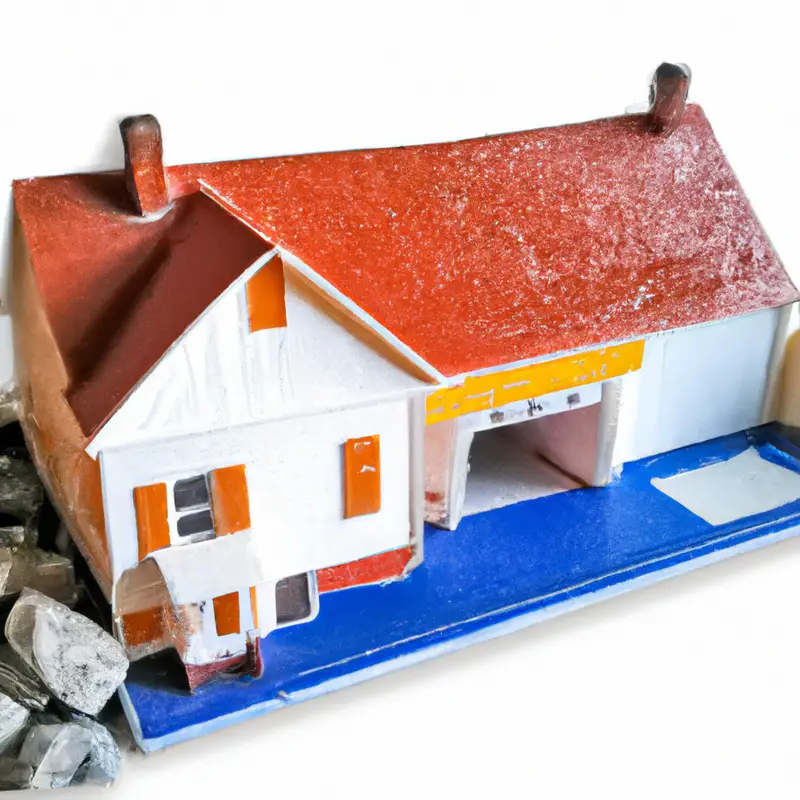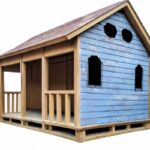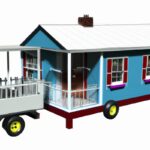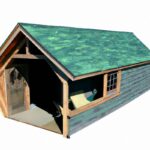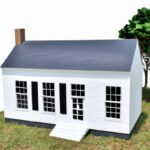Key Takeaways:
- Tiny house financing options include personal loans and RV loans.
- Other financing options for tiny houses include crowdfunding and credit cards.
- Building a tiny house on wheels can be more challenging to finance compared to a stationary tiny house.
- Researching and comparing different financing options is crucial to find the best fit for your tiny house project.
Are you ready to embrace a simpler and more sustainable way of living?
Look no further than the world of tiny houses.
These pint-sized dwellings offer a unique and affordable housing solution for those seeking financial freedom and a minimalistic lifestyle.
But how do you finance the purchase or construction of a tiny house?
In this article, I’ll guide you through the various financing options available, from traditional mortgage loans to personal savings and everything in between.
Get ready to turn your dream of owning a tiny house into a reality!
Financing Option | Description |
|---|---|
Purchase Money Loan | A traditional mortgage loan used to purchase the Tiny House. |
Personal Loan | An unsecured loan from a bank or online lender to finance the Tiny House. |
Home Equity Loan or Line of Credit | A loan that uses the equity in an existing property as collateral for financing the Tiny House. |
RV Loan | A loan specifically designed for financing recreational vehicles, including Tiny Houses on wheels. |
Construction Loan | A loan that covers the costs of building a Tiny House from scratch or major renovations. |
DIY Financing | Using personal savings or other financial resources to self-fund the purchase or construction of a Tiny House. |
Understanding the Concept of Tiny Houses
What is a Tiny House?
A tiny house is a small, fully functional dwelling typically ranging from 100 to 400 square feet in size. It is designed to maximize space efficiency while providing all the basic amenities needed for comfortable living, including a kitchen, bathroom, and sleeping area.
Tiny houses can be built on a foundation or on wheels, allowing for flexibility in location.
They offer a minimalist lifestyle, encouraging individuals to downsize and live with less stuff. Tiny houses are gaining popularity due to their affordability, environmental sustainability, and the freedom they provide to homeowners in terms of mobility and financial independence.
Benefits of Owning a Tiny House
Owning a tiny house comes with several benefits.
Firstly, it allows you to live a more minimalist lifestyle, as you have less space to accumulate unnecessary possessions.
This can lead to a sense of freedom and reduced stress.
Secondly, tiny houses are more affordable than traditional homes, both in terms of purchase price and ongoing expenses.
This makes homeownership more accessible for many people.
Additionally, tiny houses are often more environmentally friendly, as they typically require less energy to heat and cool.
Finally, owning a tiny house can provide you with the flexibility to travel and move around more easily.
Overall, owning a tiny house can bring simplicity, affordability, sustainability, and flexibility to your life.
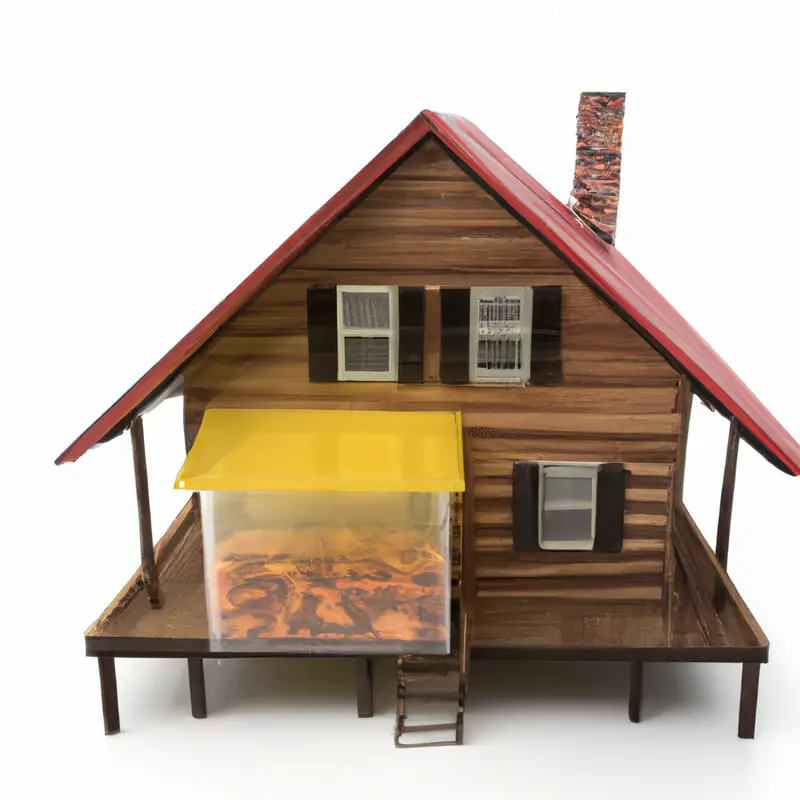
Budgeting for a Tiny House
Determining Your Budget
Determining your budget for a tiny house is a crucial step in the process. To start, take a close look at your financial situation and assess how much you can comfortably afford.
Consider factors such as your income, expenses, and any existing debts.
Next, research the cost of materials, labor, and other expenses associated with building or purchasing a tiny house. Be sure to leave room for unexpected costs and factor in ongoing expenses like utilities and maintenance.
By carefully evaluating your financial picture and researching costs, you can determine a realistic budget for your tiny house project.
Factors Affecting the Cost of a Tiny House
Several factors can affect the cost of a tiny house, including:
- Size: The larger the tiny house, the more materials and labor required, increasing the cost.
- Materials: High-quality or eco-friendly materials can be more expensive, but can also add value to the house.
- Customization: Adding personalized features or unique design elements can increase the cost.
- Location: Building costs can vary depending on the region and local regulations.
- Off-grid capabilities: If you want your tiny house to be self-sufficient, incorporating renewable energy systems can drive up the cost.
- Plumbing and electrical systems: The complexity of these systems can impact the cost.
- Labor and expertise: Hiring professionals or experienced builders can increase the cost but ensures a high-quality build.
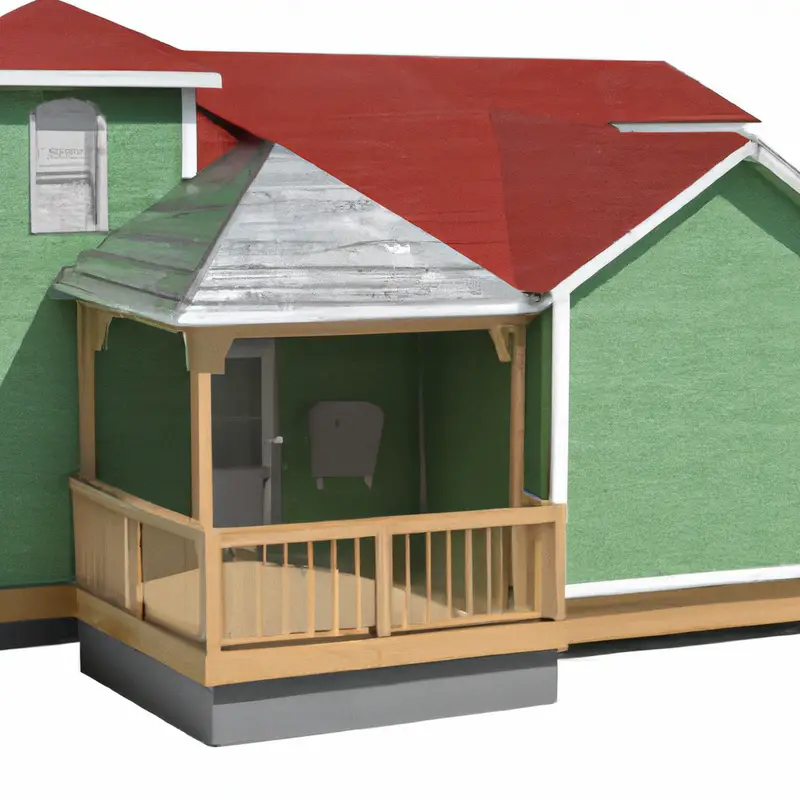
Financing Options for Tiny House Purchase
Traditional Mortgage Loans
Traditional mortgage loans can be a viable option for financing a tiny house purchase. These loans work similarly to traditional home loans, allowing you to borrow money from a lender to buy the property.
With a strong credit score and a steady income, you may qualify for a mortgage loan with competitive interest rates.
It’s important to research and compare different lenders to find the best terms and conditions for your specific needs. Meeting the lender’s requirements and providing the necessary documentation will be essential for a successful loan application.
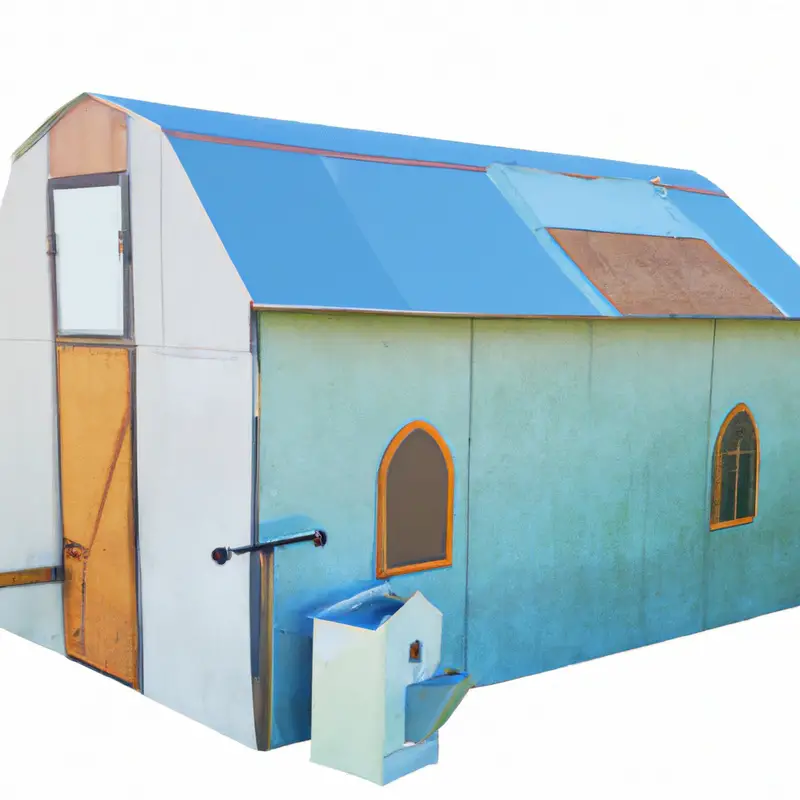
Personal Loans
Personal loans can be an excellent financing option when buying or building a tiny house.
With a personal loan, you can borrow a lump sum of money and use it for your tiny house project.
These loans typically have a fixed interest rate and a repayment term ranging from a few months to several years.
It’s important to compare offers from different lenders and consider factors such as interest rates, repayment terms, and any additional fees.
Remember to check your credit score and consider improving it before applying for a personal loan to get better terms and rates.
RV Loans
RV Loans are a popular option for financing a Tiny House. With an RV Loan, you can secure financing specifically tailored for recreational vehicles, which include Tiny Houses on wheels.
These loans typically have longer terms and competitive interest rates, making them a feasible option for many buyers.
Additionally, RV Loans often offer flexible repayment options, allowing you to find a payment plan that fits your budget. To obtain an RV loan, you will need to provide the necessary documentation and meet the lender’s eligibility requirements.
Home Equity Loans
Home Equity Loans are a popular financing option for purchasing or building a tiny house.
With a home equity loan, you can borrow against the value of your existing home.
This type of loan allows you to access the equity you’ve built up over time and use it towards your tiny house project.
It’s important to note that home equity loans typically require good credit and a steady income.
Additionally, the interest rates on these loans can vary, so it’s essential to shop around for the best rates and terms.
Remember to consider the potential risks of using your home as collateral before taking out a home equity loan.
Financing Options for Tiny House Construction
Personal Savings
One of the financing options for building or purchasing a tiny house is using your personal savings. If you have been saving up money over time, this can be a great way to fund your tiny house project without borrowing from external sources.
Using personal savings eliminates the need to pay interest on a loan, giving you greater control over your finances.
However, it’s important to consider the full cost of your tiny house project and ensure that you have enough savings to cover all expenses, including construction, permits, and any unexpected costs that may arise.
Construction Loans
When it comes to financing the construction of a tiny house, one option to consider is a construction loan.
It is a type of short-term financing specifically designed for construction projects.
Here’s how it works:
- Application Process: You’ll need to apply for a construction loan with a lender who offers this type of financing. They will review your financials, including your credit score and income, to determine your eligibility.
- Loan terms: Construction loans typically have shorter terms and higher interest rates compared to traditional mortgages. They are designed to be repaid once construction is complete.
- Disbursement: The loan amount is usually disbursed in increments or “draws” based on the construction progress. This ensures that the funds are used for the intended purpose and minimizes the lender’s risk.
- Construction process: During the construction phase, you’ll need to work closely with a contractor and provide documentation to the lender, such as progress reports and invoices.
- Transition to permanent financing: Once the construction is finished, you’ll need to secure permanent financing to pay off the construction loan. This can be in the form of a traditional mortgage or another financing option.
Construction loans can be a great option if you have the necessary qualifications and are comfortable with the short-term nature of the loan.
However, it’s important to carefully assess your financial situation and work with a reputable lender who specializes in construction financing.
This will help ensure a smooth and successful construction process for your tiny house.
Financing Through Builders
Financing through builders is one option to consider when planning to build a tiny house. Some builders offer financing programs specifically designed for their customers.
This can be a convenient option as it streamlines the process and allows you to finance both the construction and purchase of your tiny house through a single entity.
It’s important to research different builders and their financing options to find the best fit for your needs. Be sure to compare interest rates, terms, and any additional fees or requirements before making a decision.
Exploring Alternative Financing Methods
Crowdfunding
Crowdfunding can be a great way to finance your tiny house.
It involves reaching out to a large group of people, often through online platforms, and asking for small donations or investments towards your project.
It’s important to create a compelling campaign that showcases your vision and the benefits of owning a tiny house.
Offer rewards or incentives to donors, such as personalized shoutouts or exclusive updates.
Share your campaign on social media and with friends and family to maximize your chances of success.
Be prepared to actively engage with your supporters throughout the crowdfunding process.
Peer-to-Peer Lending
Peer-to-Peer (P2P) lending is a popular alternative financing method for purchasing or building a tiny house. With P2P lending, you can borrow money directly from individuals or groups without involving traditional financial institutions.
It offers flexible terms and competitive interest rates.
Some popular P2P lending platforms include Prosper, LendingClub, and Upstart. To access P2P lending, you usually need a good credit score and a solid financial history.
It’s important to research and compare different P2P lending options to find the best fit for your needs.
Understanding the Legal Considerations
Zoning and Building Codes
Zoning and building codes are important considerations when it comes to owning or building a tiny house.
These regulations vary by location, so it’s crucial to research and understand the specific rules in your area.
Zoning laws determine where tiny houses can be placed, such as in designated residential areas or as accessory dwelling units.
Building codes ensure that your tiny house meets safety and construction standards.
It’s essential to comply with these requirements to avoid legal issues and ensure a successful tiny house venture.
Insurance and Certification Requirements
Insurance and certification are important considerations when it comes to owning a tiny house. Lenders may require insurance coverage for the structure.
Certification, such as RVIA or THIA, can also be necessary for financing purposes.
Insurance protects against damage or theft, while certification ensures that the tiny house meets safety standards. Contact insurance providers to get quotes and research certification requirements from relevant organizations to ensure compliance.
It’s crucial to have the proper insurance and certification for a smooth financing process.
Tips for Successful Tiny House Financing
Researching and Comparing Financing Options
When researching and comparing financing options for your tiny house, it’s important to gather information from multiple sources.
Look into traditional mortgage loans, personal loans, RV loans, and home equity loans.
Consider the interest rates, repayment terms, and eligibility requirements for each option.
It’s also helpful to compare the pros and cons of different lenders or financial institutions.
Don’t forget to factor in your credit score and financial situation when making a decision.
Taking the time to thoroughly research and compare financing options will help ensure you make the best choice for your tiny house project.
Improving Your Credit Score
Improving your credit score is an important step when financing a tiny house. Here are some tips:
- Pay your bills on time: Consistently paying your bills on time shows responsible financial behavior and will boost your credit score.
- Reduce your debt: Lowering your debt-to-income ratio by paying off debts can significantly improve your credit score.
- Use credit cards responsibly: Keep your credit card balances low and avoid maxing out your cards. Aim to use no more than 30% of your available credit.
- Avoid opening too many new accounts: Opening multiple new credit accounts within a short period can negatively impact your credit score.
- Check your credit report regularly: Monitor your credit report for errors or discrepancies and contact credit bureaus to correct any inaccuracies.
- Keep old accounts open: Length of credit history matters, so avoid closing old credit card accounts, even if you’re not using them.
Improving your credit score takes time, so it’s important to start early and be consistent in practicing good financial habits.
Saving for a Down Payment
Saving for a down payment is an important step when financing a tiny house. To start, set a specific savings goal and create a budget to determine how much you can save each month.
Find ways to cut back on expenses and increase your income, whether through a side job or selling unused items.
Consider opening a separate savings account to keep your down payment money separate and avoid spending it. Stay motivated by tracking your progress and celebrating milestones along the way.
In the end, your hard work and discipline will pay off when you reach your down payment goal.
Seeking Professional Advice
If you’re considering financing a tiny house, seeking professional advice is a smart move. A professional can provide valuable guidance and help you navigate the complexities of the process.
They can help you understand your options, evaluate financing terms, and choose the best route for your specific situation.
Additionally, they may offer insights into local regulations and zoning laws that can affect your plans. Whether it’s a financial advisor, mortgage broker, or tiny house specialist, reaching out to a professional can save you time, money, and stress in the long run.
Final Verdict
Financing a tiny house purchase or construction involves careful planning and consideration. Understanding the concept of tiny houses and their benefits is the first step.
Determining your budget and considering factors affecting the cost are essential in making informed decisions.
Exploring financing options such as traditional mortgage loans, personal loans, RV loans, and home equity loans can provide flexibility. Additionally, alternative methods like crowdfunding and peer-to-peer lending offer unique opportunities.
It is crucial to be aware of the legal considerations, including zoning and building codes, as well as insurance and certification requirements.
Lastly, researching and comparing financing options, improving your credit score, saving for a down payment, and seeking professional advice can greatly contribute to successful financing. With these insights, you can confidently embark on your tiny house journey.
